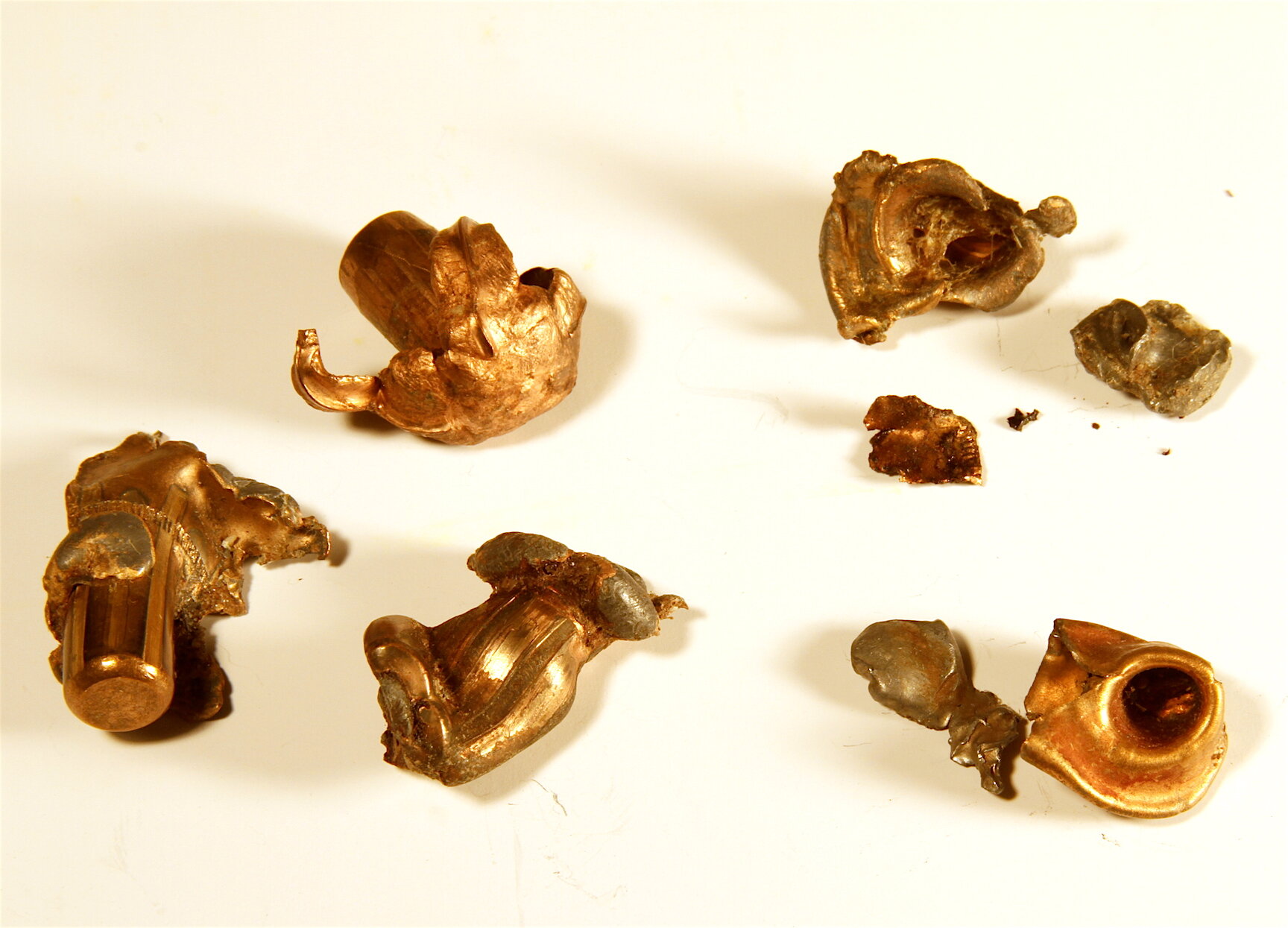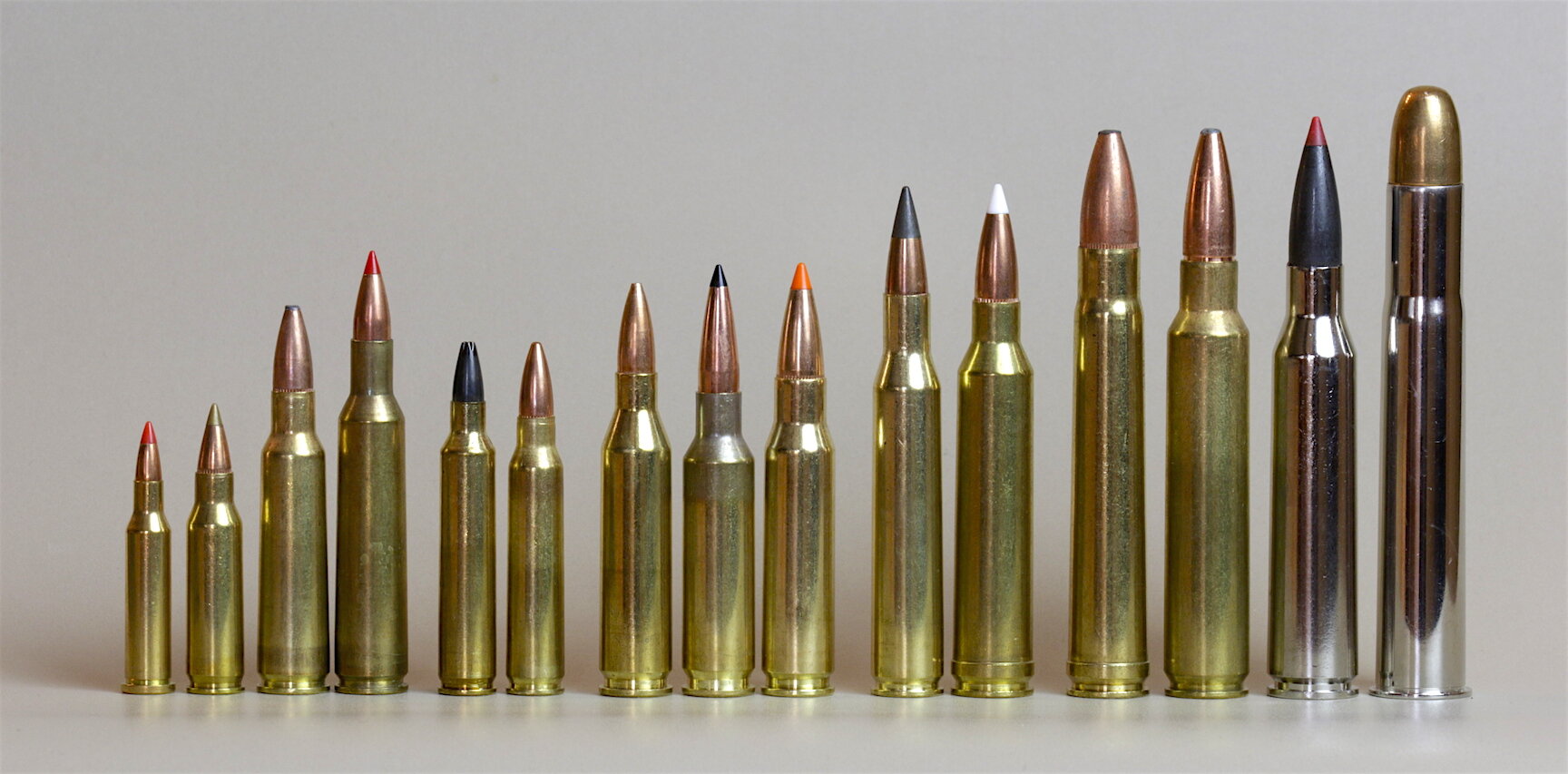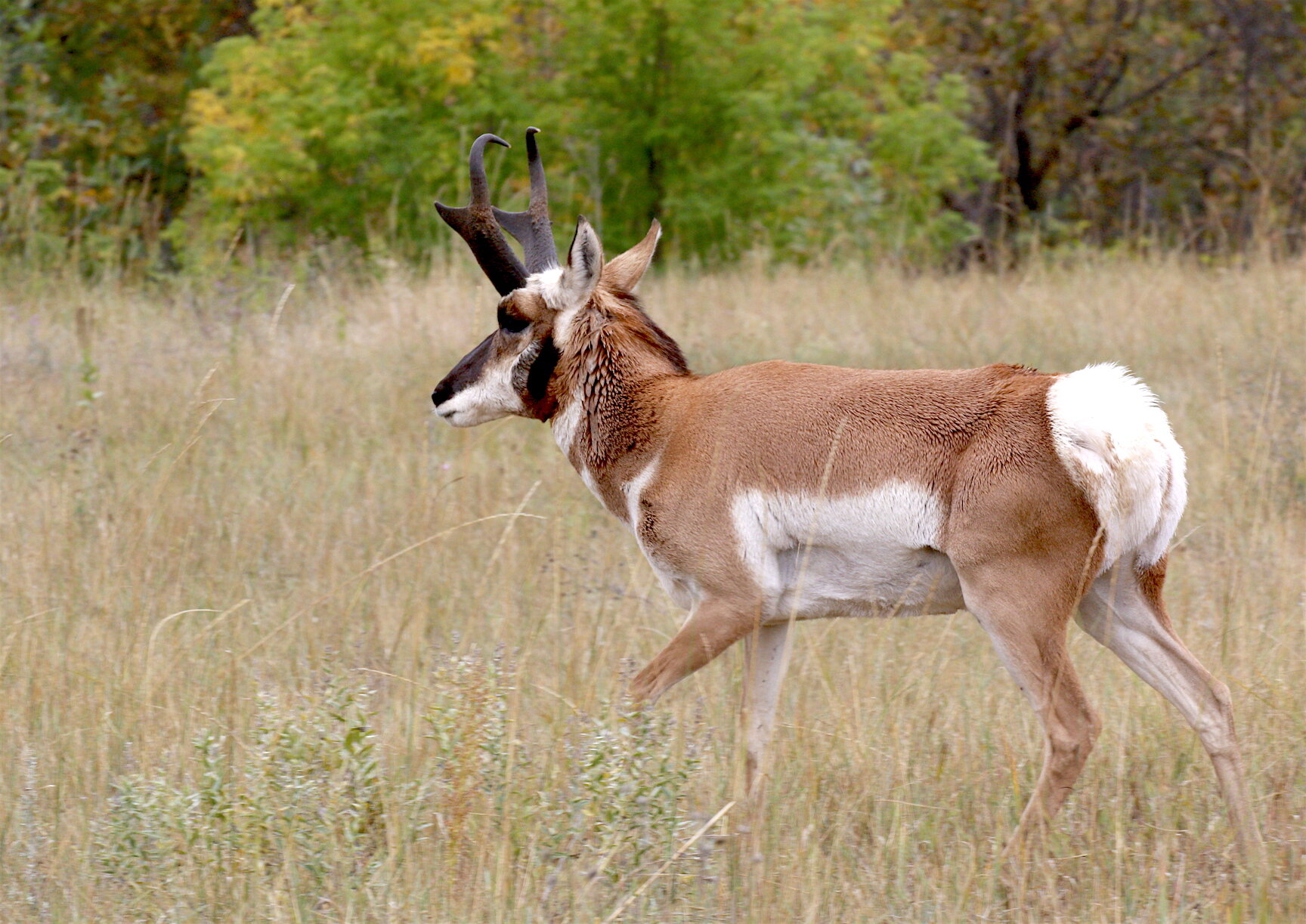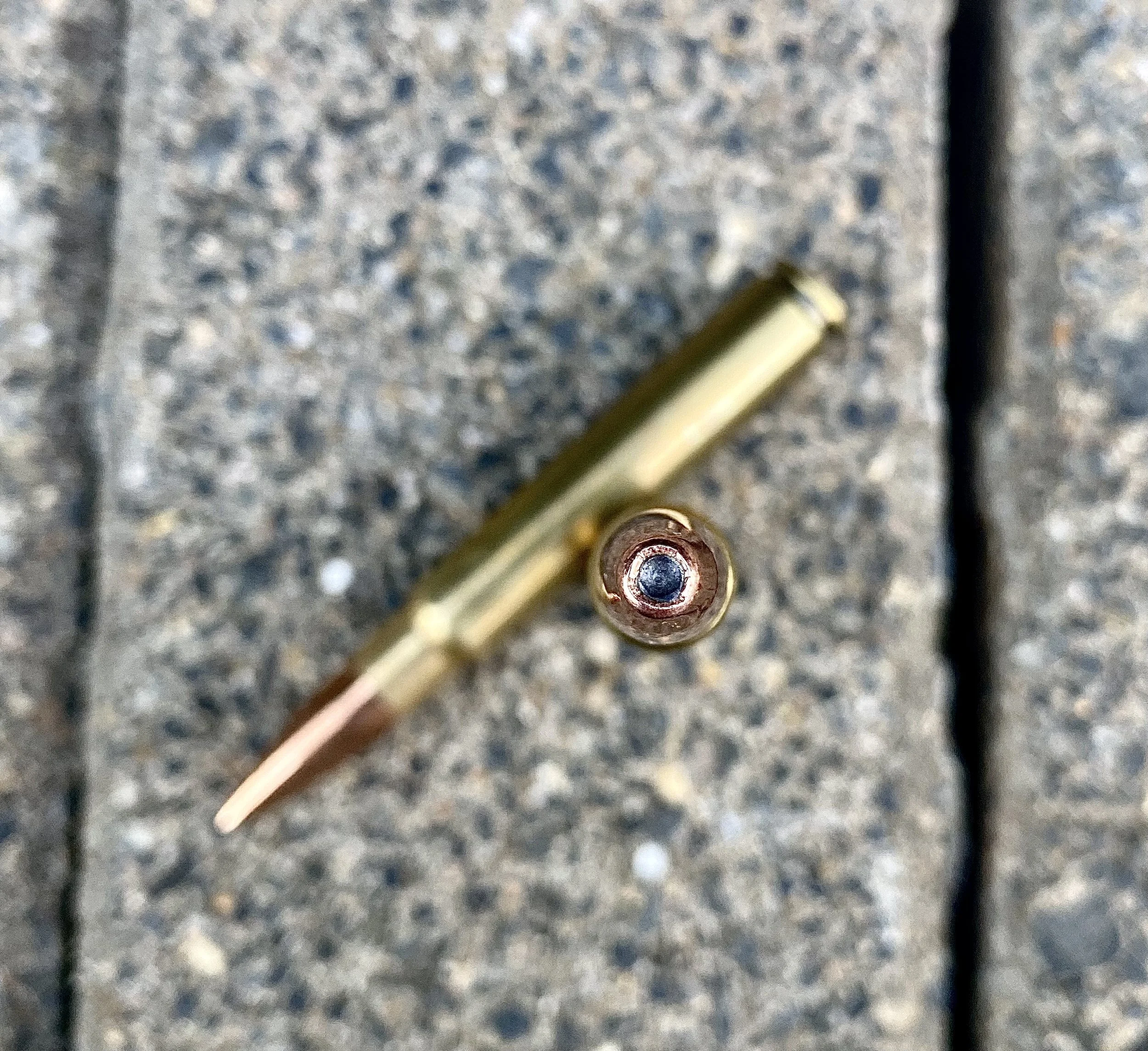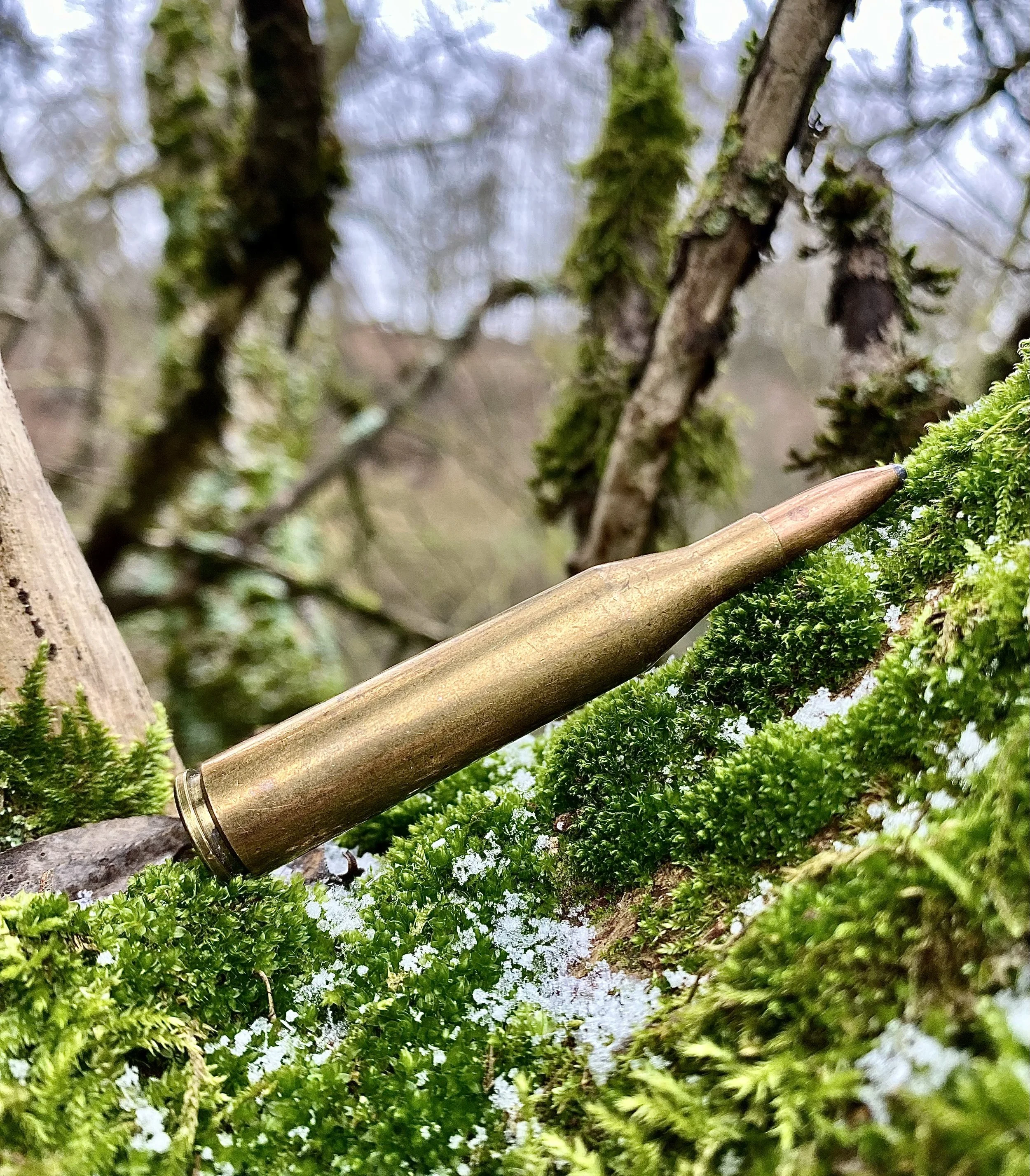Ideal Hunting Bullet: How to Choose
How do you choose the ideal hunting bullet? A reader recently asked the following:
Good day, I enjoy you articles Ron but I do have a question I just got a Hawkeye 7MM Mag Ruger I want to use the right bullet for this rifle, sure would like some advice on this not haveing shot it yet. Thanks
The Question Everyone Asks
This gentleman asks the question every hunter has asked. Or eventually will. The answer is not simple, but crucial because our hopes and dreams are carried by the bullets we send downrange. What our bullets do determines whether we eat venison or another tag. If the bullet fails, the world's most expensive rifle and advanced scope are superfluous. So this question deserves a thorough answer...
Image shows 15 wildly different rifle cartridges and bullets, emphasizing difficulty in choosing ideal hunting bullet.
I came up with nine factors for adjudicating your bullet choice. Did I forget any? Price could be one, but it seems penny wise and pound foolish to scrimp on the most important component in our hunting tool box. So let's get serious about selecting our ideal hunting bullet.
Hunting cartridges and bullets come in a confusing array of sizes and types, making choosing the ideal hunting bullet rather complicated.
The Ideal Hunting Bullet Hinges on at Least Nine Parameters
When choosing your ideal hunting bullet you should consider:
Your rifle.
Cartridge (muzzle velocity and caliber.)
Hunting style (stand, glass-and-stalk, block-and-drive, etc.)
Accuracy.
Distance to target.
Bullet shape and construction.
The game you’re pursuing.
The habitat and terrain you hunt.
The kinds of shot angles you anticipate taking. You must usually compromise a bit and strike a balance between soft bullets (these expand easily, erode and often break apart) and hard bullets (these control expansion in a variety of ways to retain more mass for deeper penetration, as explained in this blog.) Let’s investigate...
Consider Carefully When Selecting Your Ideal Hunting Bullet
1.Cartridge. Despite the mystique surrounding most rifle cartridges, there's nothing magical about their shape. Long and skinny, short and fat, tapered or straight, slope-shouldered or sharp -- it's makes minimal difference to performance outside of target shooting concerns and handloading issues. For hunting, cartridges are all just convenient reservoirs of powder with bullets already attached so you don’t have to ram things down the muzzle. The bigger the powder reservoir, the faster it can push a given weight of bullet. The faster the bullet, the tougher or harder you want it to be. Why? Because it has to withstand high impact forces. A soft, pure-lead, 150-grain cup-and-core bullet that strikes its target at 1,400 fps (30-30 Win. at 300 yards= 670 foot-pounds of energy) carries a lot less energy than the same bullet landing at 2,400 fps (300 Win. Mag. at 300 yards= 1,900 foot-pounds energy.) Conclusion: when shooting high velocity cartridges, choose harder, more controlled expansion bullets in every caliber from .224 through .416. The 7mm Rem. Mag. fits this category. Ditto 22-250 Rem., all the 300 magnums -- pretty much any cartridge that generates muzzle velocities of 3,000 fps and faster. With cup-core bullets (detailed here,) the larger the caliber and heavier the bullet for caliber, the more likely that long bullet will stay in one piece and penetrate deeply. High sectional density gets the credit for this.
The ideal hunting bullet for a 6.5mm cartridge like these depends on intended use.
2.Your rifle will influence bullet speed. Tight chambers and rough barrels tend to increase pressures and speeds. Longer barrels wring out slightly more velocity than do short barrels. Figure roughly 30 fps per inch.
3.Bullet shape also influences the ideal hunting bullet. Long, sleek projectiles with high ballistic coefficient ratings retain energy much better than do short, round-nose or flat-nose bullets. Inefficient bullet shapes waste energy to air drag. A 150-grain round-nose from a 300 Win. Mag. retains just 1,180 foot-pounds energy at 300 yards, 720 f-p less than a spire point of the same weight. For maximum energy, minimum drop and minimum wind deflection, use high B.C. bullets.
4.Impact distance plays a big role. At a certain distance downrange even the fastest bullet slows to 30-30 velocities. Figure your likely maximum shooting range into your cartridge calculations. The challenge is selecting a bullet that can stand up to high impact speed/energy during close range shots, yet expand adequately at the low impact speed/energy of long range shots.
5. Your hunting style should influence bullet selection. If you’re patient and only take perfect, broadside shots behind the leg, a soft bullet should suffice. If you punch through a shoulder or angle from behind forward to the lungs, you'll want a harder bullet. If you take shots no farther than 250 yards, high velocity and high B.C. aren’t as important as they are for long range shooting. If you anticipate shooting 300 yards or more, bullet B.C. and velocity become more important. Choose cartridge and bullet accordingly.
Image shows ideal hunting bullets after impacting game. Expansion varies.
The Final Steps to Choosing Your Ideal Hunting Bullet
6. Distance to target. We've addressed this under hunting style and accuracy, but let's reiterate. If you know you will never take a shot beyond 150 yards or 300 yards or 400 yards, you can make accurate assessments of your cartridge/bullet's likely impact speed, and that will inform your choice of bullet construction/type. Limiting your range makes bullet selection much easier.
7.Accuracy is a product of your rifle, the bullet and you. Test a rifle’s inherent accuracy with a variety of bullets from a solid bench rest where human error is minimized. Don’t worry about sub-MOA accuracy. Any rifle/bullet than can put all shots inside 2 inches at 100 yards will keep them inside 8 inches at 400 yards. That’s easily the vital zone of a whitetail. Then test your own accuracy by engaging quarry-sized targets from real field positions, i.e. sitting, kneeling, etc. Your maximum range should be the distance at which you can always put a bullet into a target equal in size to the vital zone of the game you hunt. This maximum range will then indicate the likely impact velocities your bullets will endure. Pinpoint accuracy is nice, but don't trade that for a too-soft or too-hard bullet.
8.Your quarry should be a huge influence on selecting your ideal hunting bullet. The bigger the game, the harder or more controlled expansion your bullet should be. This isn’t because controlled-expansion projectiles hit with more punch. It’s because they limit frontal expansion, retain most of their weight in one piece and thus penetrate farther. When you have to burrow through the hair, hide, muscle mass and heavy bones of a moose, eland, zebra or grizzly — you want a tough bullet.
9.Shot angles, as touched on above, make a big difference in how effectively bullets penetrate to reach the vitals. Soft cup-and-core bullets at high impact speeds shouldn’t be trusted to plow through major muscle, bone or paunch to reach the chest cavity. In any caliber, heavier-for-caliber bullets (longer) in a given material and construction tend to penetrate better than lighter (shorter) ones. In my experience, monolithic copper bullets like Barnes TTSX and bonded partition or solid shank styles like Swift A-Frame and Federal Trophy Bonded Tip penetrate the best. Winchester's XP3 bullet was a deep penetrator, but they seem to be phasing them out. Next in line are Nosler Partitions and various bonded core bullets. Each matches up with certain impact speeds/energies. If I think I might need to anchor a fleeing elk with a Texas heart shot or hit anything close at high impact speed, I want a tough, controlled expansion bullet.
10. Know this: There is no one ideal hunting bullet for all occasions. Many come close, but none is perfect. Don't be afraid to use different bullets for different game, different hunts. On elk hunts I'll sometimes carry a "broadside-behind-the-shoulder" bullet followed by a magazine full of deep penetrating bullets. If a careful heart/lung shot fails and I need to anchor an elk heading north, I have the controlled expansion bullets ready to rumble.
Photo of a big, bull bison in snow dramatizes the need for a big, heavy, long, ideal hunting bullet.
Photo of a pronghorn buck illustrates need for lighter, more lightly constructed projectile for the ideal hunting bullet.
Conclusion
To sum up, here are generalities to use as guidelines when choosing your ideal hunting bullet:
The faster the muzzle speed, the harder (controlled expansion) the bullet should be.
The closer your quarry, the harder the bullet should be.
The lower the bullet's B.C., the softer it can be.
The larger and tougher the game, the harder the bullet.
If you want pass throughs (two holes for better blood trails,) use controlled expansion bullets.
The more a bullet expands, the wider but shallower the wound channel.
The less a bullet expands, the longer/deeper but narrower the wound channel.
No bullet performs perfectly or exactly the same every time. Be ready for the unexpected.
No bullet/cartridge/impact energy can always knock down or kill any big game animal instantly unless you hit it in the central nervous system. Animals shot in heart/lungs with any bullet may run for several seconds (sometimes minutes) depending on degrees of hemorrhaging.
Again, you don't have to use the same ammo/bullets for all your hunting. Match the hunt and game to your ideal hunting bullet.
# # #
The author has used most brands and types of bullets and cartridges while hunting everything from bunnies to hippos around the world.


